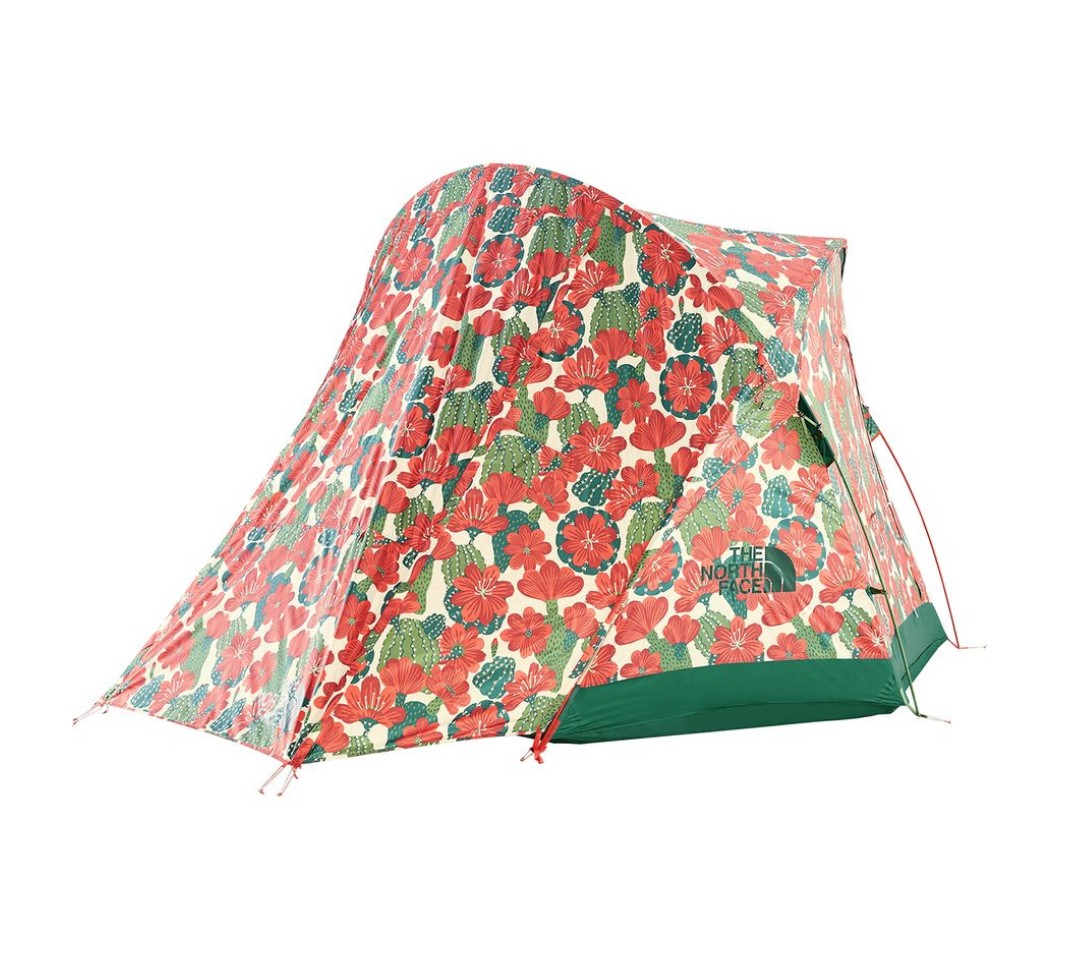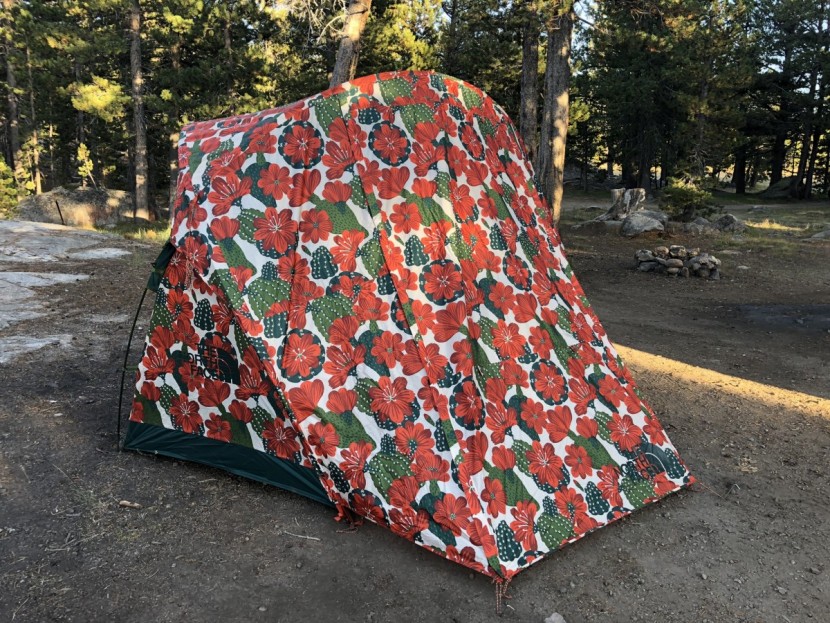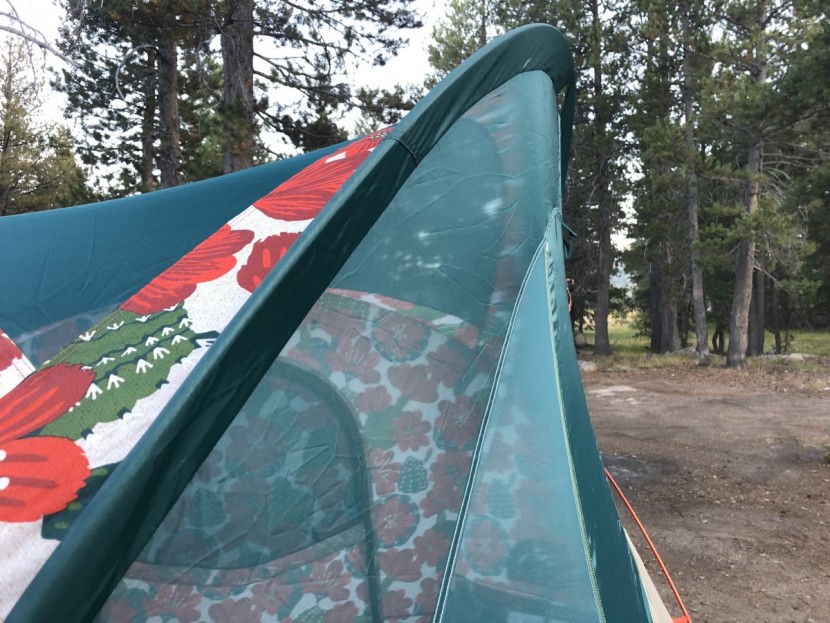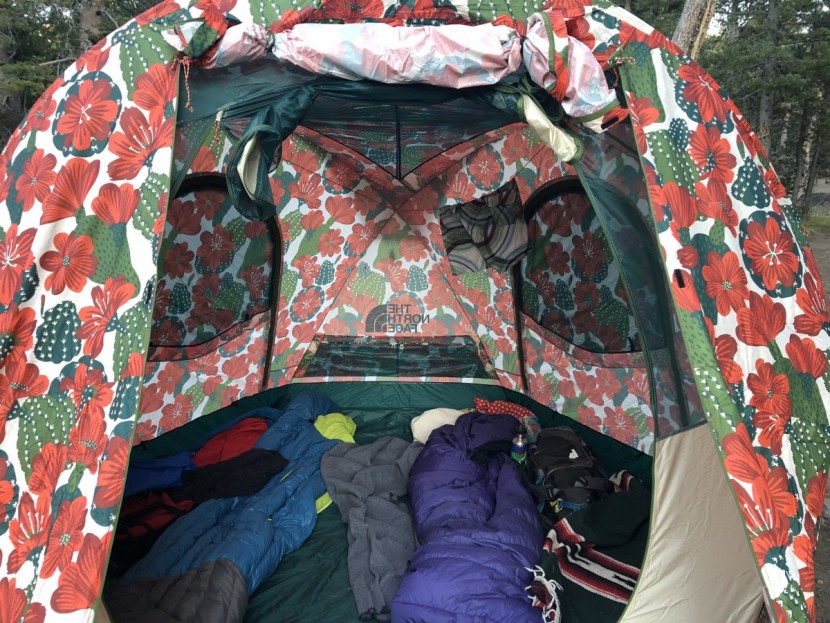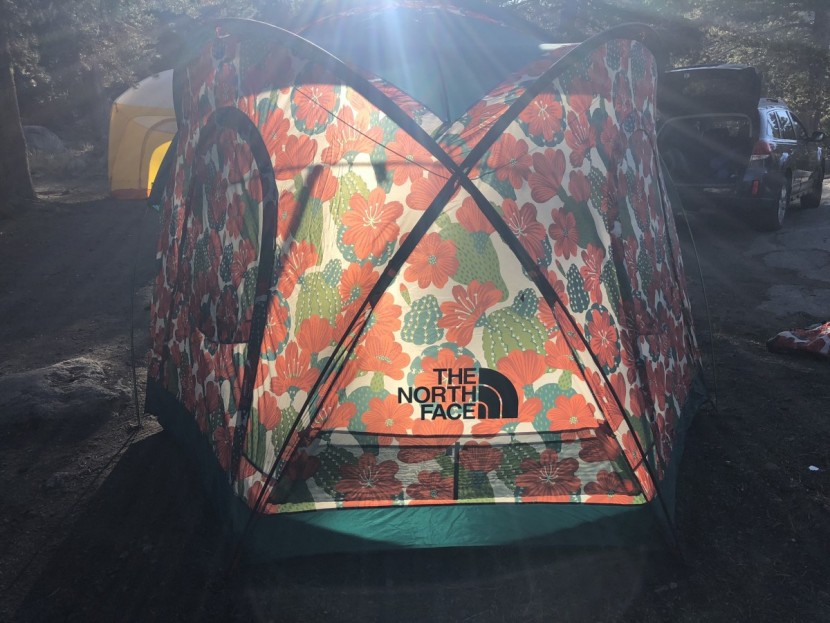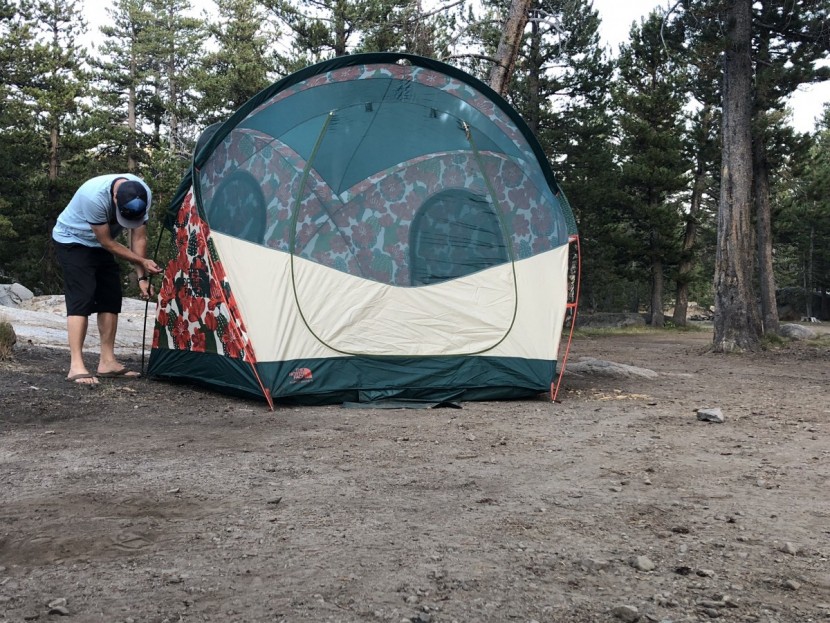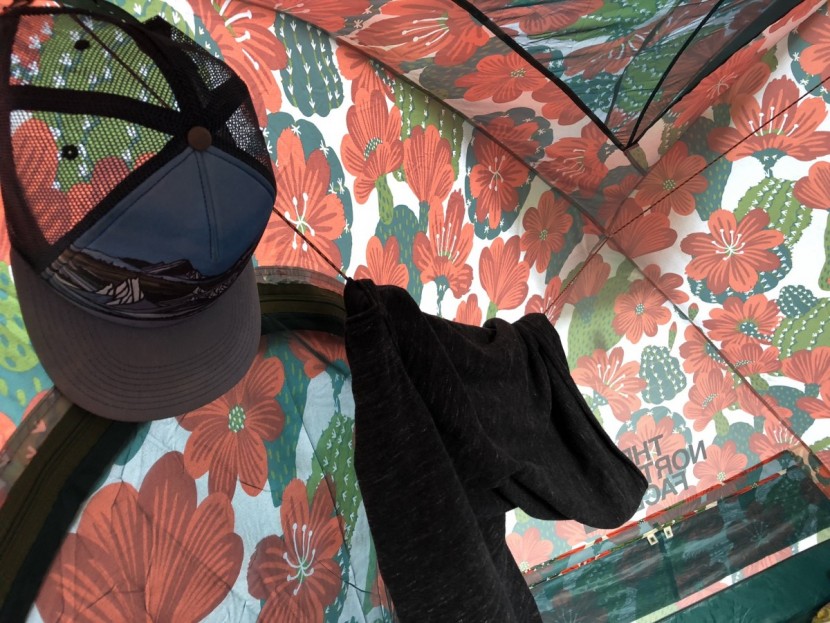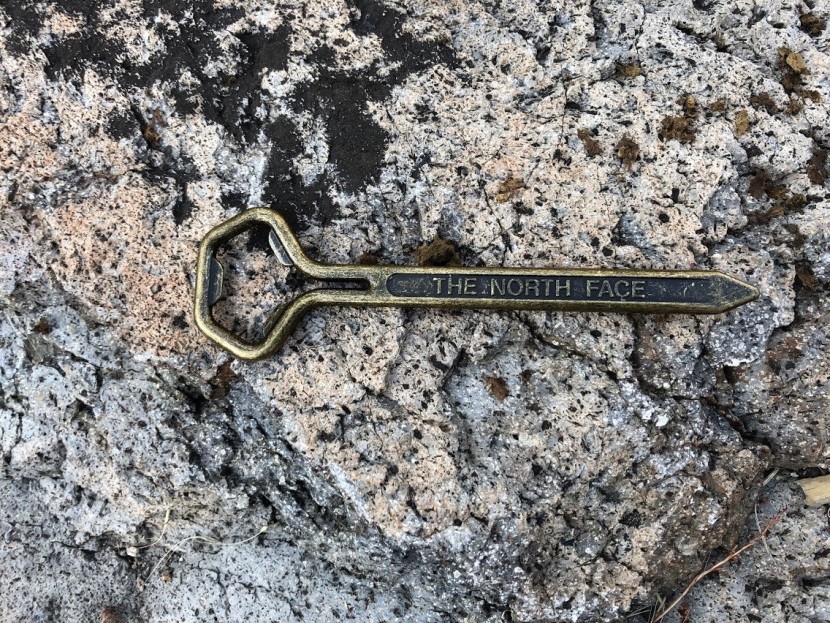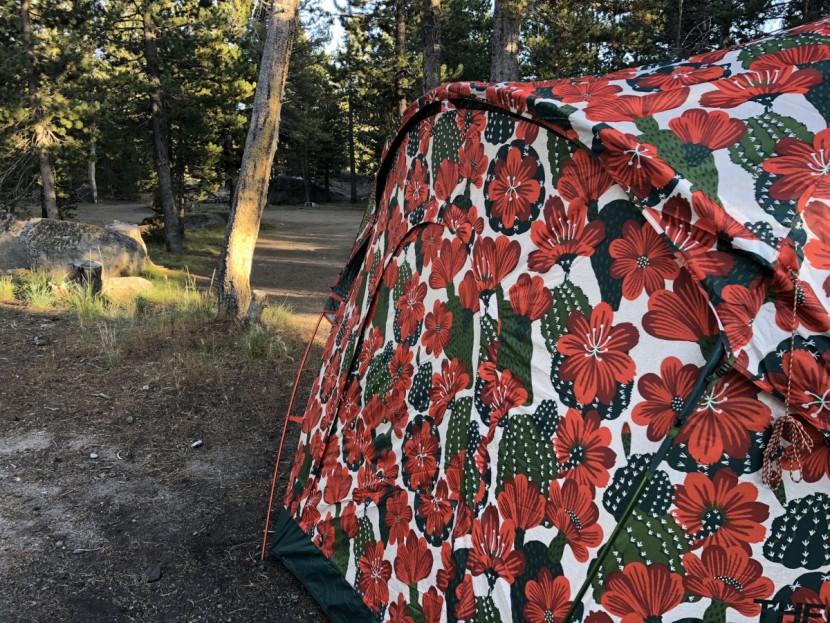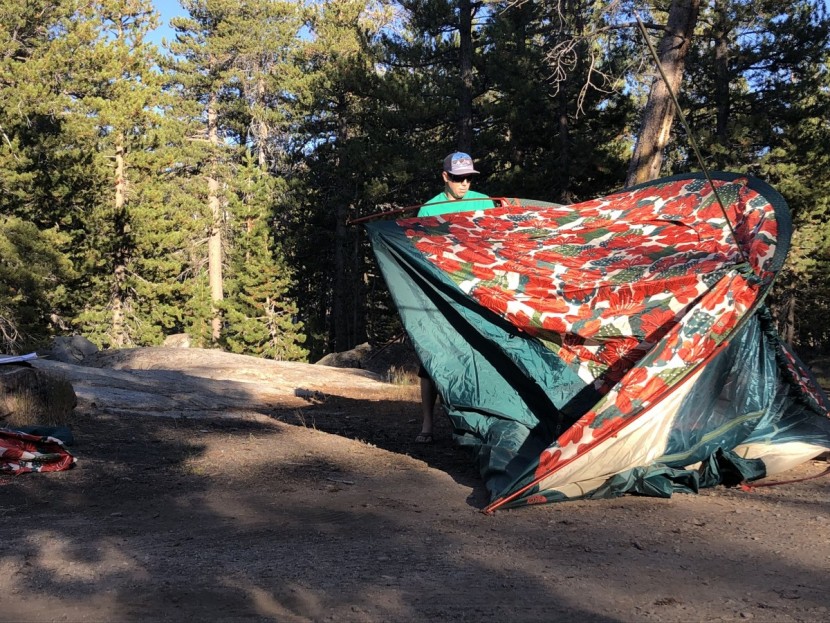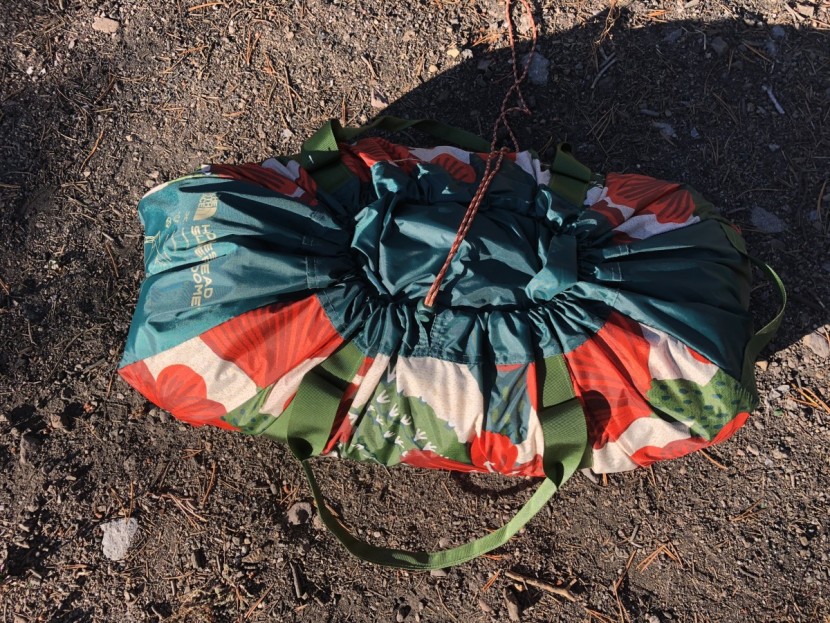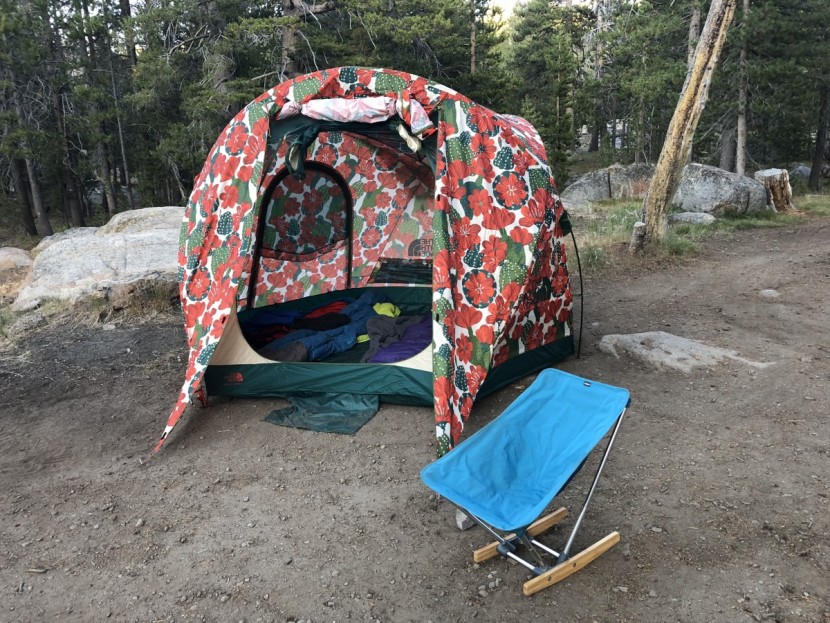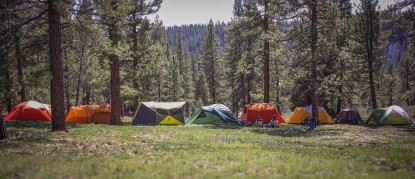The North Face Homestead Super Dome 4 Review
Our Verdict
Our Analysis and Test Results
Comfort
The Homestead Super Dome is more dome-ish than your typical dome tent. A standard dome tent has two poles, that go caddy corner, crisscrossing in the middle, which is fine, but geometry teachers everywhere would point out that this means you have four sides and 90-degree corners. That's not a dome, that's a square. The Super Dome has six sides and three doors, making it much rounder in design, and hence, dome-like. At 56 square feet, it's comparable to the other four-person tents we reviewed and that floor space goes straight up to full-standing height (our tallest tester as 6'1" and had no problem standing up throughout the tent). The North Face lists the peak height as 80 inches, but we found this to be a bit deceiving as that height is reached at the top of the main/front door and almost immediately dips a good six inches, but still, even 74" is plenty of headroom for most people.
As with most tents, the stated capacity is always a little high. That being said, more so than any other four-person tent we tested, the Super Dome might actually be able to hit that four-person standard. We tested it with three people and were plenty comfortable.
What really makes it viable for three or four people are the three doors. Most family camping tents have two doors, which invariably means you're stepping over, around, even on your tent mates, particularly in the dead of night when you've really got to use the bathroom. The Super Dome utilizes a more triangular spread of doors, one main door up front, and two doors flanking out and away from the back. What this does is allow everyone to have a close and easy exit point.
Nearly the entire front panel of the Super Dome, as well as the entirety of the ceiling, is mesh, meaning fresh air will never be in short supply. Warm days will be mitigated by even the slightest breeze, and if you sleep without the rainfly on, you'll doze off to a full panorama of starry skies.
The rainfly provides a reasonable vestibule off the front of the tent for keeping wet and muddy gear out of the tent, but still out of the elements. The vestibule can also be zipped up both sides, rolled, and secured above the door to give you plenty of options.
Two rows of three deep pockets line opposite walls of the Super Dome, giving you plenty of room to keep valuables off the floor. Furthermore, the pockets aren't sewn into the wall of the tent, allowing them a little more freedom of movement, but more importantly, allowing you to stuff a bit more in them than you would be able to otherwise.
We admittedly find ourselves drawn to the smaller, non-crucial, features of a tent from time to time. In this case, we loved the built-in laundry lines on either side of the Super Dome. Sure, you can always bring your own small rope and string things up, but this way you don't have to, and you'll never forget to. Whether it's drying those wet shorts after swimming in the lake, or just hanging things up and out of the way, it's a purpose-driven and useful feature.
Finally, we have to tip our hat to the design folks at The North Face for including an oddly large, copper stake with the rest of the more standard stakes. At first glance, we thought it was some kind of super stake (and in a way we were right), meant to go in at the chosen spot on the ground to keep the Super Dome standing in hurricane-force winds. Turns out, it's a dummy, or more accurately, a bottle opener. They even included it, with directions, on the inventory sheet, and let's be honest, who doesn't need a beer while setting up a tent? Well played (and cheers!) North Face, well played.
Weather Resistance
The Homestead Super Dome is a bit Jekyll and Hyde with its rainfly. Upfront, the coverage is great; there's a good-sized veranda that goes all the way to the ground, keeping you dry and giving you a place to put any wet or muddy gear too. Oddly, and it's part of the design, so bear with us here, as the rainfly goes around the back of the tent it relies on a series of hooks and washers that only go down, at most the top half of the tent. Here is another place where traditionalists are going to cringe. Remember how the front of the tent is mostly mesh? That's why the fly dominates at the front. The back of the tent is almost entirely a thicker, 75 denier polyester, the same weight polyester as the rainfly, so you basically already have a rain fly around the back before you even put on the proper rainfly. The only difference, and it's worth noting is that the waterproof rating on the walls of the main tent is just slightly lower than on the fly (1200Mm to 1500Mm), though both employ the same polyurethane coating. While we couldn't coax any rain out of the sky during our testing (and we did an impressive rain dance), we'd feel comfortable with the Super Dome in a light afternoon shower, but if something truly torrential rolled in our apprehension and anxiety might take over.
Ease of Setup
Despite the storage bag's claim to an “Easy Pitch Design”, we would be very hesitant to use the words “ease” or “easy” when referring to setting up the Super Dome. Our first attempt, admittedly without reading the directions, took roughly 20 minutes. With some practice, we got it down closer to ten, but it's still far from an easy up. The problem is simply that because of its unique design (a lot of curves and wide angles) it's counterintuitive to set up. To North Face's credit, they do try to make it easy by color-coding the poles and grommets. Green goes to green, red goes to red. Unfortunately, before any color gets where it's going, it makes turns and twists that will have you wondering if you might be setting up a roller coaster rather than a tent. Setting it up does get easier with time and practice, but easier is not the same as easy.
Packed Size
The Homestead Super Dome packs down to the size of an average duffle bag. There's nothing particularly fancy about the storage bag, but the final size is wholly manageable and thanks to a cinch line around the top of the bag, it can be stuffed back in like a sleeping bag stuff sack. All told, a very easy pack up.
Workmanship
Despite having a non-traditional design, the quality of the Super Dome is still high. The poles are thick, sturdy, and should stand up to many season's worth of windy days. All seams are taped, which should keep you dry when the clouds roll in. The 75 denier polyester is thick to the point of almost being burly. All in all, the Super Dome has a sturdy feel to it that cheaper, poorly-designed tents do not. This tent should give you a great many nights outdoors.
Value
The Homestead Super Dome is a mid-level tent at a mid-level price. That's a good value. You're not paying for more than you're getting. The value we see is in its innovation. It's a quality tent, with unique features, but you're not going to pay the inflated price you tend to see in other new, shiny, and innovative toys.
Conclusion
The North Face Homestead Super Dome 4 tent is a unique tent with some great features and a couple of small flaws. It offers some interesting solutions to the space and height conundrum, so long as you have the patience (or maybe another beer) to set it up.


